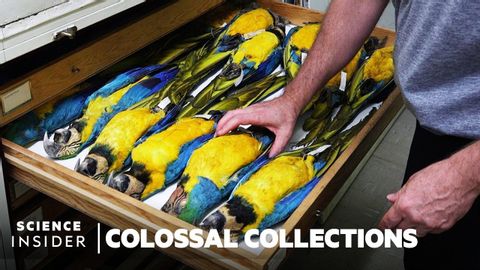為什麼60多萬隻鳥的標本被保存在史密森尼博物館|巨大的收藏品 (Why Over 600,000 Bird Specimens Are Preserved At The Smithsonian | Colossal Collections)
 沒有此條件下的單字
沒有此條件下的單字- adj.(肉等)老的;咬不動的;堅韌的:艱苦的:困難的;強硬的;嚴格的;堅韌的;不屈不撓的;棘手的;費勁的;剛強的
- n.硬漢
- v.t.使變堅強
- v.t./i.忍受
US /ˈprɛznt/
・
UK /'preznt/
- adj.出席;在場的;目前的
- n.正在進行的;現在時態;目前的;禮物
- v.t.介紹;主持;介紹;展現;贈送
- v.i.出現
- n. (c./u.)通道;接近或使用的機會;訪問
- v.t.訪問
- v.t./i.存取(資料);訪問
- v.t./i.伸展(肢體等);拉長
- n.伸展;一段路程、區域;物品連續排列;一段時間;階段
